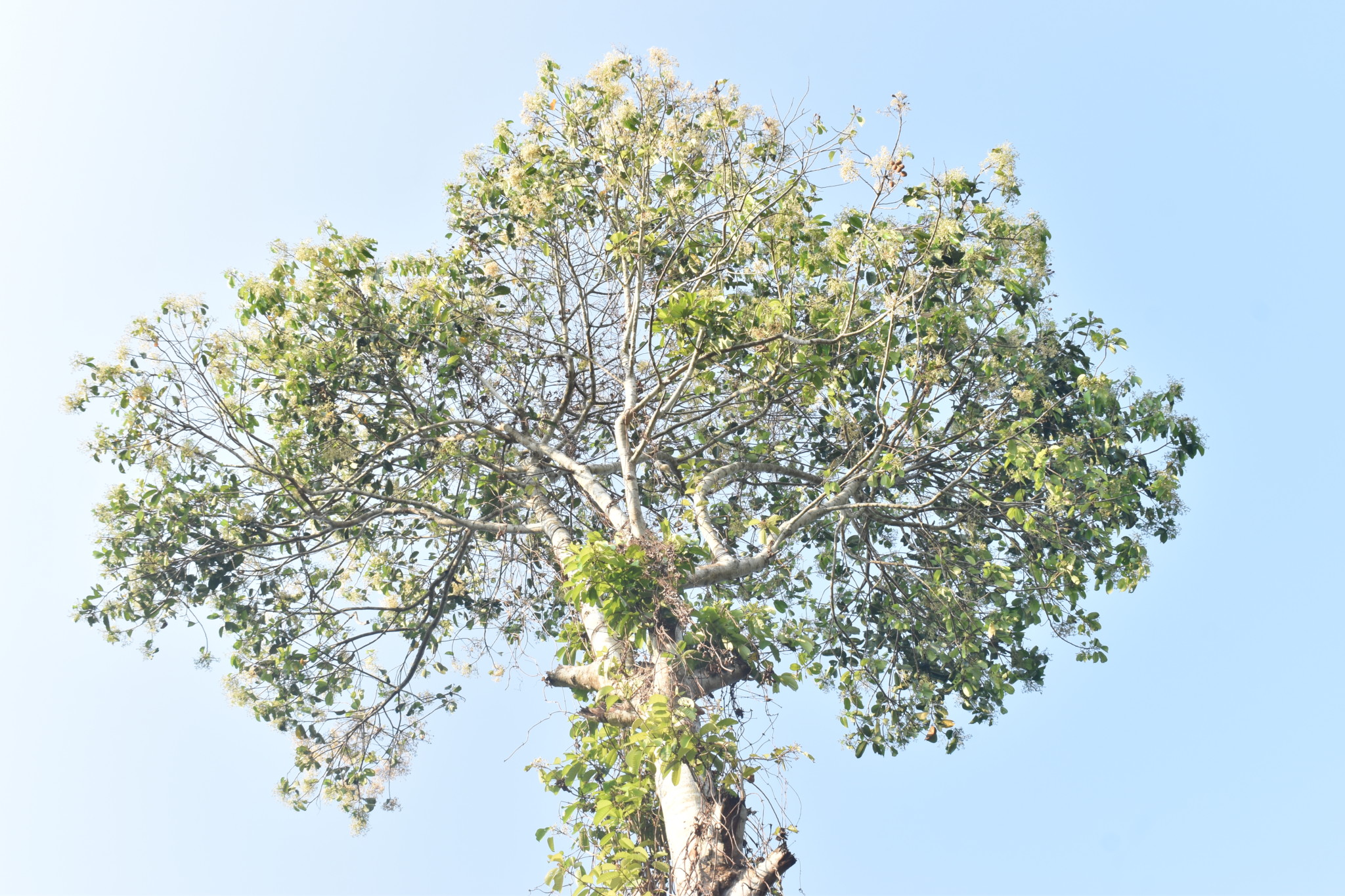White dammar tree

Scientific Name :
Vateria indica L.
Synonym(s) :
Vateria malabarica Blume
Local/Common name(s) :
Vellappayin, White dammar tree
Family :
Dipterocarpaceae
Habit :
Tree
Flowering/Fruiting Time :
March-August
Habitat :
Evergreen and semi-evergreen forests, also in the plains
Endemic :
Yes
Status (IUCN) :
Vulnerable (VU)
Distribution :
Western Ghats
Nativity :
Uses :
Medicine
Description (Morphology) :
Evergreen trees, to 30 m high, bark 10-12 mm, greyish, blotched with white and green, smooth; exudation, sticky, resinous; branchlets puberulus. Leaves simple, alternate, 7-20 x 5-9 cm, oblong, apex acuminate or obtusely acute, base round, obtuse or cordate, margin entire, glabrous, coriaceous; lateral nerves 12-18 pairs, parallel, prominent, intercostae scalariform, prominent ; petiole 25-40 mm, stout, stellate pubescent, swollen tipped; stipule narrow, lateral, deciduous. Flowers bisexual, white, 2-3 cm across, fragrant, in terminal panicles, densely stellate puberulus. Sepals 5, free, lanceolate, covered with stellate hairs. Petals 5, white, obovate, spreading, shortly united at base. Stamens many, free; filaments hairy; anthers often slightly hairy at base; connective produced into a filiform appendage. Ovary superior, ovoid-oblong, tomentose, 3-celled, 2-ovules in each cell; style filiform, glabrous; stigma small. Fruit a capsule, 11-15 x 5-6 cm, pale brown, ovoid or oblong-ovoid, lanceolate, tip acuminate; seed one.

